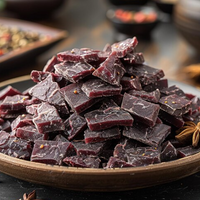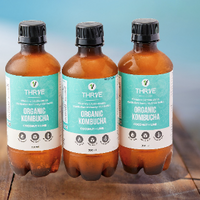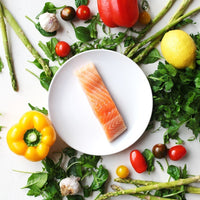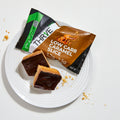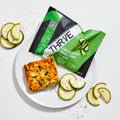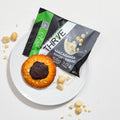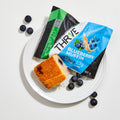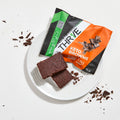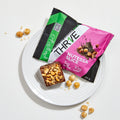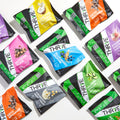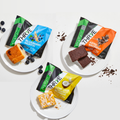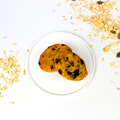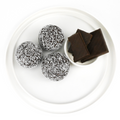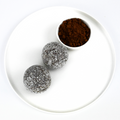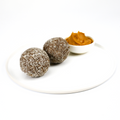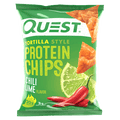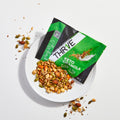Dirty keto is the spinoff diet that’s making headlines, but what’s the hype all about?
 It’s got all the hallmarks of a typical keto diet – it’s ultra low carb with plenty of fat. But that’s really where the similarities end. Dirty keto, as the name suggests, is the opposite to #cleaneating. No food is off limits if it fits into your macros. A dirty keto diet could consist entirely of fast food, snack foods, deli meats and processed cheeses – as long as they’re low carb. Basically, all of the processed food and barely a veggie in sight!
It’s got all the hallmarks of a typical keto diet – it’s ultra low carb with plenty of fat. But that’s really where the similarities end. Dirty keto, as the name suggests, is the opposite to #cleaneating. No food is off limits if it fits into your macros. A dirty keto diet could consist entirely of fast food, snack foods, deli meats and processed cheeses – as long as they’re low carb. Basically, all of the processed food and barely a veggie in sight!
The ‘keto’ definition is pretty loose, too. Many dirty keto fans stick to the low carb part, but are less concerned with the breakdown of protein and fats in their diet. By contrast, the macros in a typical keto diet are usually about 60-75% of calories from fat, 15-30% from protein and 5-10% from carbs. Sure, life’s too short to be clean eating all the time. But a full-time commitment to the dirty keto life could certainly have health consequences.
All calories are not equal
The fundamental issue with dirty keto is that eating well is about more than just meeting a macro and a calorie count. The quality of those calories counts. “Foods are so much more than just a number or a nutritional information panel,” says THR1VE nutritionist Shannon Young. “For example, an avocado is a fantastic high fat, low carb addition when following the keto diet. However, when looking only at macros, it has a higher percentage of carbs and less protein than a McDonald’s cheeseburger sans the bun. So, the burger would be a much better option for a keto dieter right? Not quite. The avocado has nearly twice as much good fat – a keto win – and contains beneficial fibre. It’s also packed with valuable vitamins and minerals which the bunless burger basically has none of.”
A healthy keto diet primarily consists of minimally processed wholefoods. Non-starchy vegetables should still be the hero on your plate, along with some quality protein. The keto diet is high in fat – so it’s critical it’s made up of good fats. Typically, these can be sourced from foods like avocados, extra virgin olive oil, fatty fish, nuts, seeds and the like.
“Fat is an essential nutrient that’s important for hormone production, the absorption of fat-soluble vitamins, bone health, insulin production and heart health – just to name a few,” says Shannon. “However, the over-consumption of the wrong fats can increase the risk of heart disease, stroke and Type 2 diabetes. The main culprit is trans fats, which are found in varying levels in meat, whole milk and cheese, vegetable oils that have been hydrogenated, desserts, biscuits and fried foods. When consuming a diet that concentrates on quantities, not quality, there is a higher risk of consuming too much of the wrong thing.”
Is there any upside?
There is one positive take-away from a dirty keto diet. One of the biggest issues with any diet is compliance. The argument that “the best diet is the one you’ll stick with” does have some, err, weight to it. While doing “dirty keto” 100% of the time is not a good idea, if eating some low-carb processed food now and again helps you stay on track with your goals – that’s better than falling off the wagon entirely.The question you really have to ask about any diet – including dirty keto – is what you want to get out of it long-term. “The dirty keto diet may get you results just like the standard keto approach in the beginning. However, it isn’t going to measure up in the long run,” says Shannon. “Without the right nutrients, your cravings will go through the roof, your energy levels will plummet and your immune system won’t be getting the support it needs. This means you’ll inevitably fall off the wagon and probably end up back where you started. It’s best to knuckle down and take the proper approach from the beginning.”
Bonus: eating quality, nourishing ingredients from the start will help turn your diet into a lifestyle – not just a quick fix.

